As the current holders, plenty of eyes will be on Germany as they seek to bring back the World Cup again from Russia. After their semi-final exit at Euro 2016, there were some questions as to whether Joachim Low’s era was coming to a close, with the likes of Philipp Lahm, Miroslav Klose and Bastian Schweinsteiger retiring, only for them to then qualify for this tournament with a spotless record of ten wins from ten and a victory at the Confederations Cup with a second string squad, ensuring expectations remain high.
Germany’s squad
Coach: Joachim Low
Plenty of continuity here. Low has been involved in the Germany set-up since the first changes under Jurgen Klinsmann then succeeded him as head coach following the 2006 World Cup. He’s overseen all of their current period of success, which culminated in victory at the World Cup in Brazil four years ago.
While they began with a quick, vertical gameplan under his stewardship, Low took advantage of many of his squad’s work with Pep Guardiola at Bayern Munich to change to a slower, more possession-orientated style for their victory in Brazil. They at times felt like a Spain-lite though, who got by due to their superior quality of players rather than a perfectly-suited gameplan. Their squad still possesses tremendous quality and depth, but there may be more challengers this time around, with a renewed Spain, a France side that can match their strength in depth and a Brazil team of players at their peak, so Low’s tactics may be more significant than before.
Also eats his own snot.
Goalkeepers
Manuel Neuer, Marc-Andre ter Stegen, Kevin Trapp
Defenders
Jerome Boateng, Matthias Ginter, Jonas Hector, Mats Hummels, Joshua Kimmich, Marvin Plattenhardt, Antonio Rudiger, Niklas Sule
Midfielders
Julian Brandt, Julian Draxler, Leon Goretska, Ilkay Gundogan, Sami Khedira, Toni Kroos, Mesut Ozil, Sebastian Rudy
Forwards
Mario Gomez, Thomas Muller, Marco Reus, Timo Werner
Tactics
Although he sometimes used a back three, Low used a 4-2-3-1 in seven of the ten qualifiers, moving away from the 4-3-3 he used in Brazil, with Mesut Ozil brought back into the centre. Having largely been anonymous in the 2014 victory stationed out on the right wing, Ozil is now the main link between defence and attack in Germany’s build-up.
The Arsenal man tends not to track back far, instead drifting into a position where he can receive the ball once Germany win it back. The likes of Mats Hummels, Jerome Boateng, Toni Kroos and Manuel Neuer tend to be the men picking up the ball at Germany’s base and all of them are capable of picking out long raking passes into the feet of Ozil, so he just maintains the angle to keep himself available and waits. With Timo Werner constantly running in behind ahead him, the wingers making runs to join him and the full-backs bombing forward, Ozil has plenty of options when he does pick up the ball, allowing Germany to quickly spring an attack.
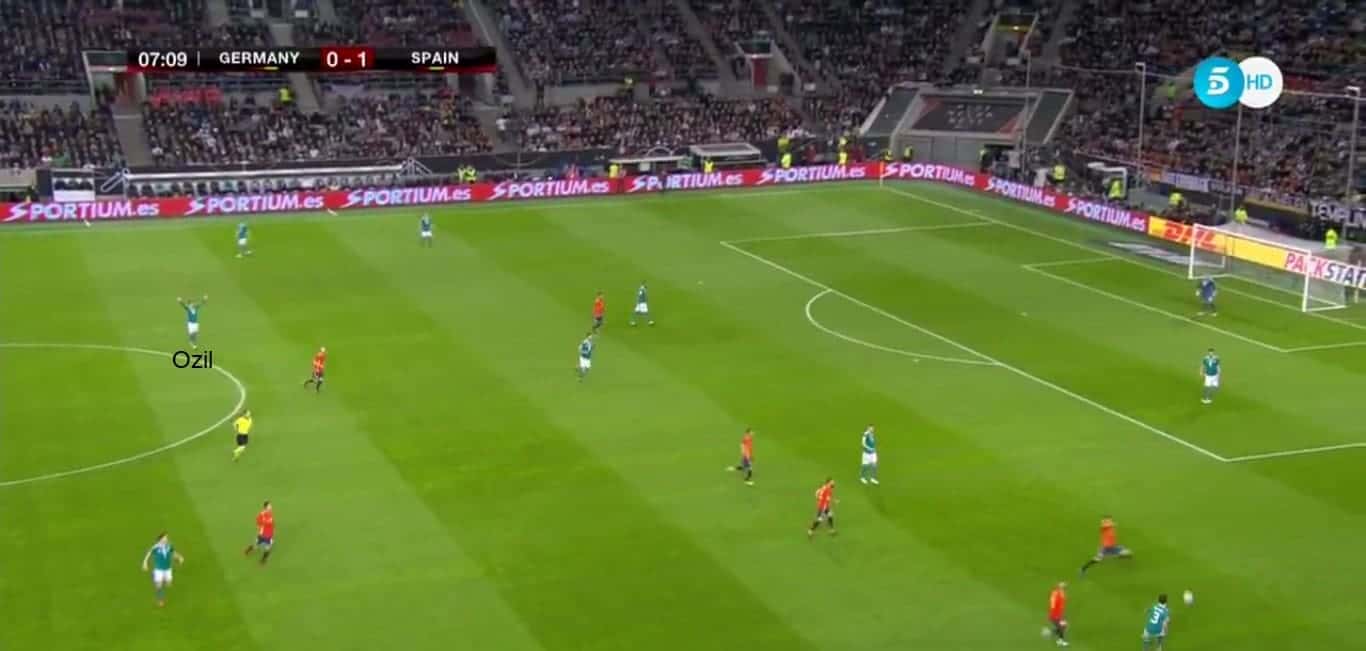
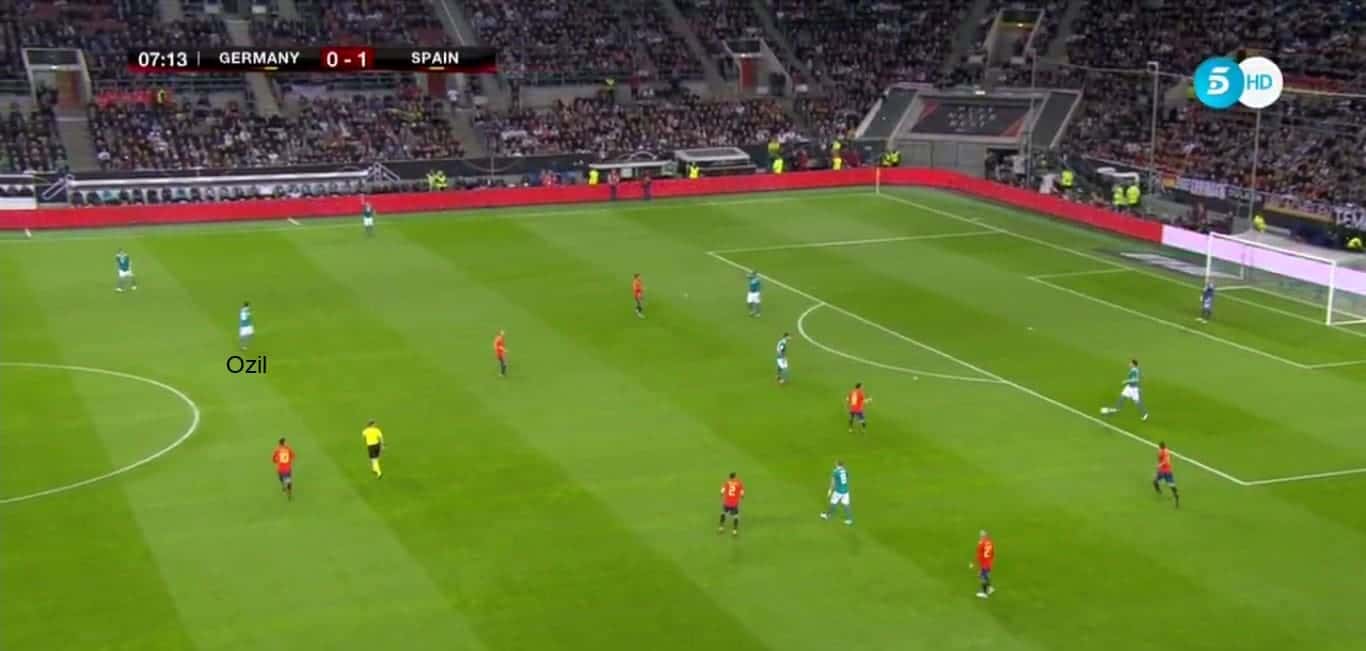
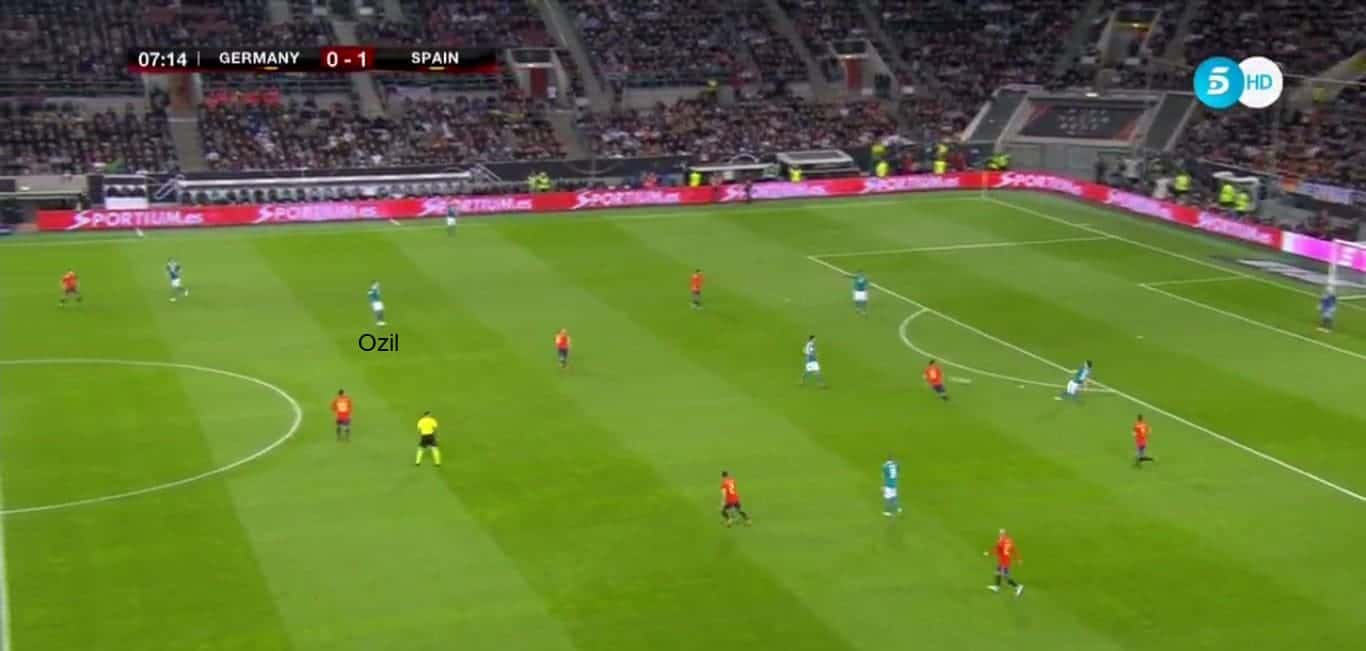
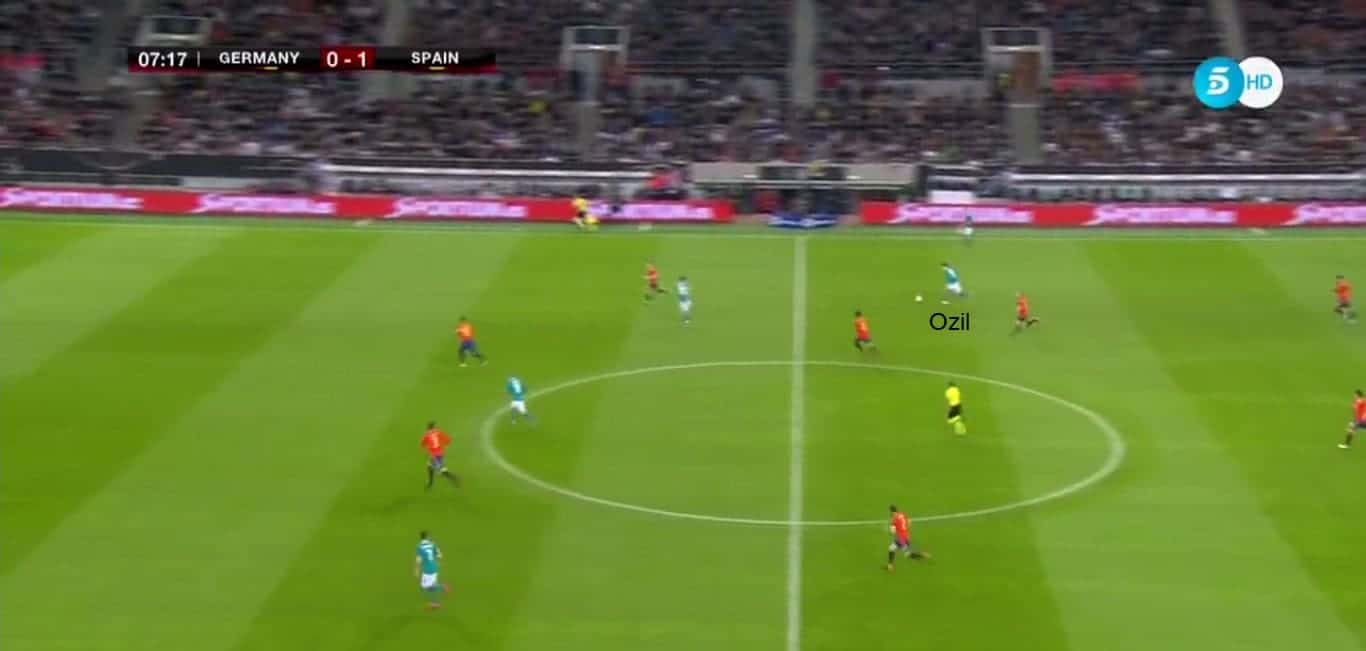
Ozil’s role isn’t generally to play the final pass to set up a goal, but instead to connect the players. This is obvious when Germany are trying to play the ball out from the back, but is also true when they are trying to break down a defence. Ozil will typically hover around outside the box, constantly making himself available for a short pass if a move is breaking down then moving it along with another short pass to change the angle. Much of his play for Germany is similar to that of a pivot in holding midfield despite playing in attack: constantly show for the ball, receive it, move it on quickly and simply.
He’s of course more than capable of picking out a pass, but much of the creativity is left to Thomas Muller and Julian Draxler (although this is likely to be Marco Reus if he can keep fit), who tuck inside between the lines or test the opposition offside line, while the full-backs stay high and wide to maintain the width.
His failure to track back does highlight the key weaknesses of the German team though. They press high up the pitch in a 4-4-2 shape, with Ozil joining Werner up top. The attacking midfielder doesn’t put a great deal of effort into his defensive work though and as a result the opposition can easily play around Germany’s press if they have any quality on the ball. This is also a problem in midfield, where Kroos is an excellent passer and decent positionally but, as a converted number ten, he can easily be played around and beaten in one-on-ones. As a result, it’s likely to be Sami Khedira who is chosen alongside him rather than Ilkay Gundogan, as he offers greater defensive nous, but Khedira is still primarily a box-to-box midfielder rather than a defensive one, as is possible alternative Leon Goretzka.
It’s not too difficult to drag Germany’s central midfielders up the pitch and open up space between the lines to get straight at the backline, and their success might depend on the Bayern partnership of Boateng and Hummels. It may be beyond their opponents in the earlier stages but might prove decisive in the latter rounds of the tournament, with Spain finding it easy to play through the German press in their friendly in March.
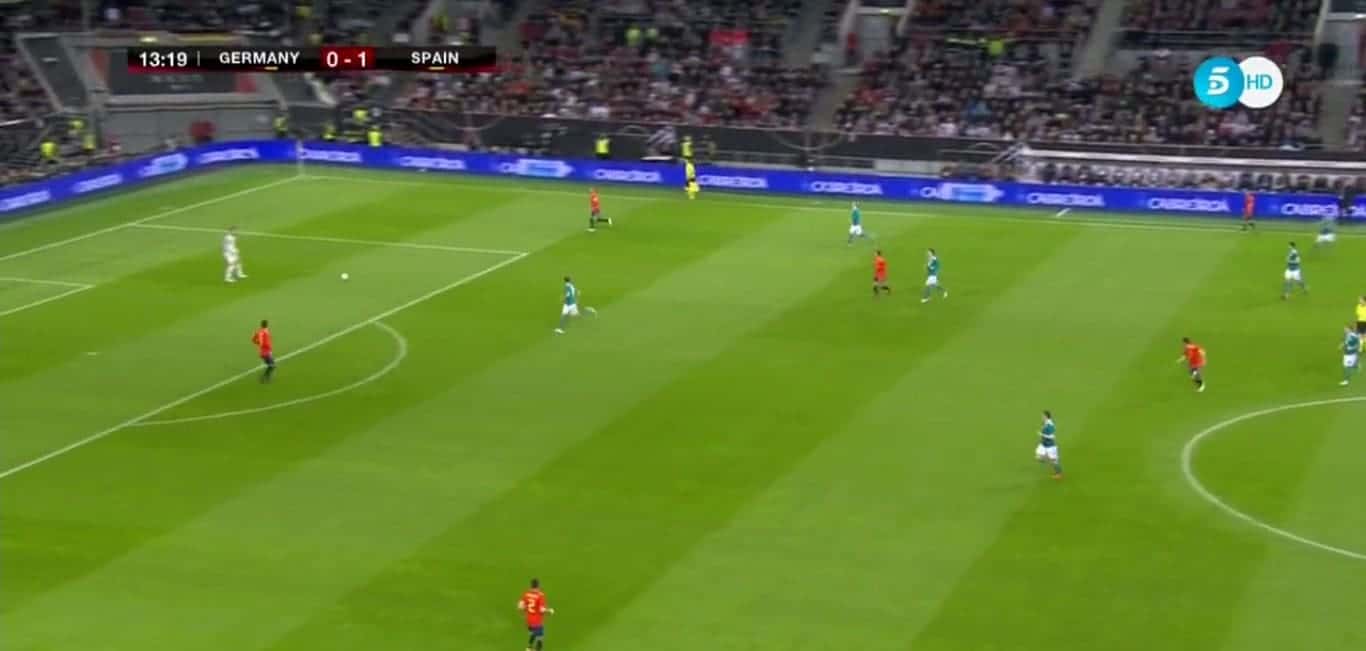
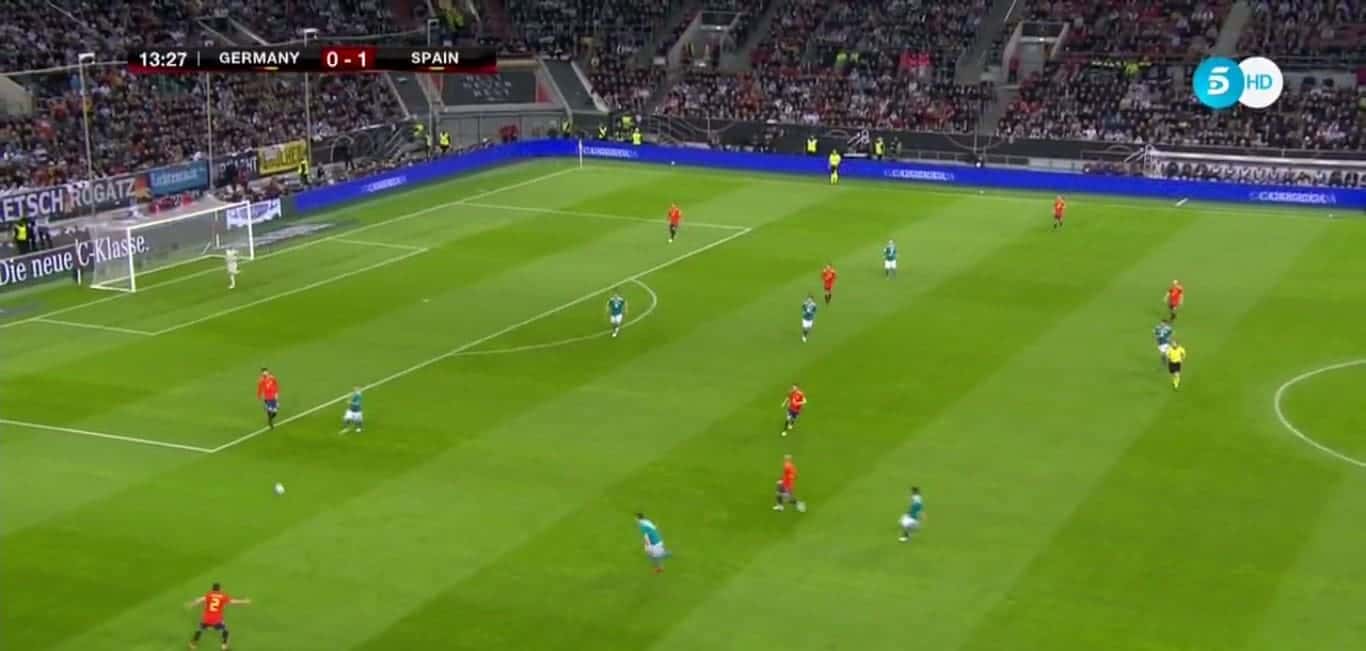
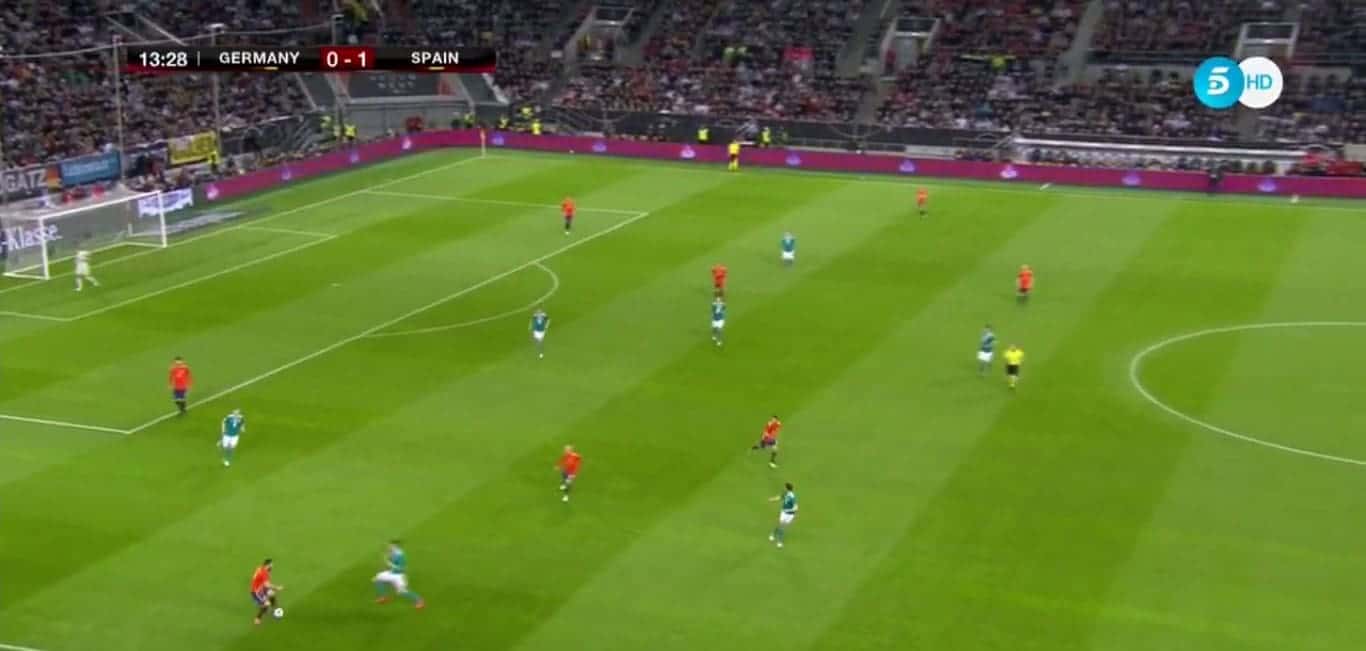
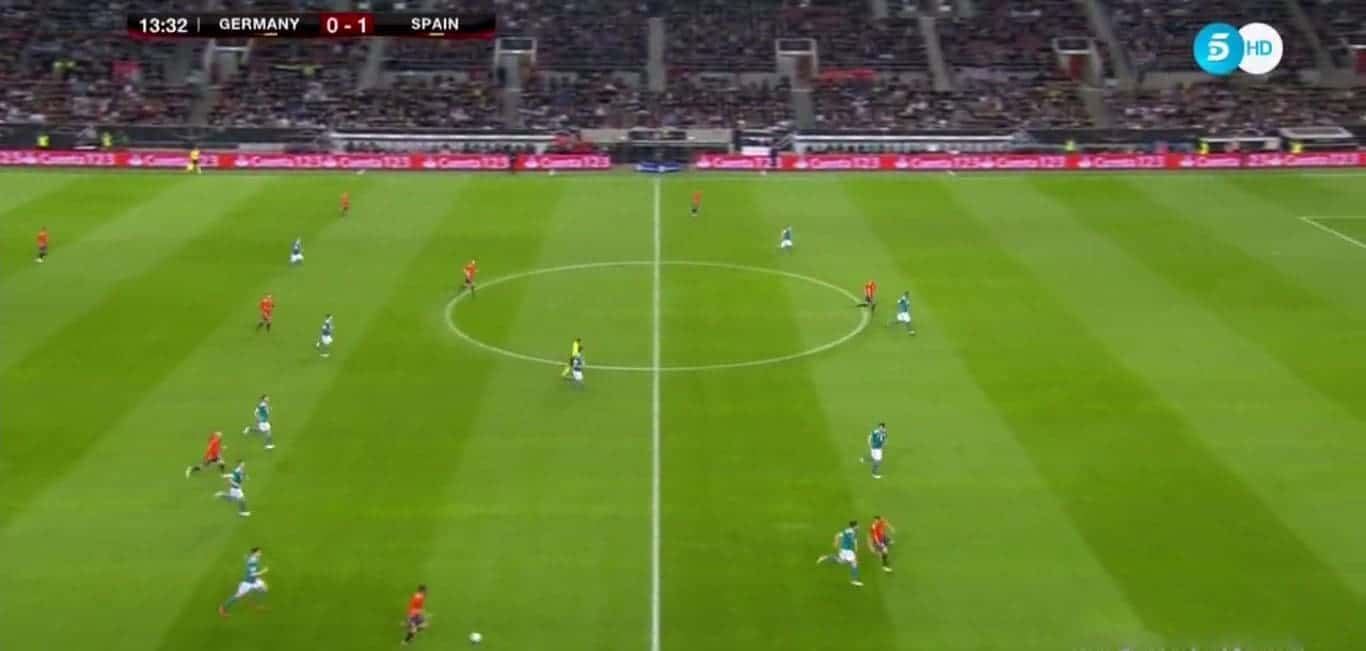
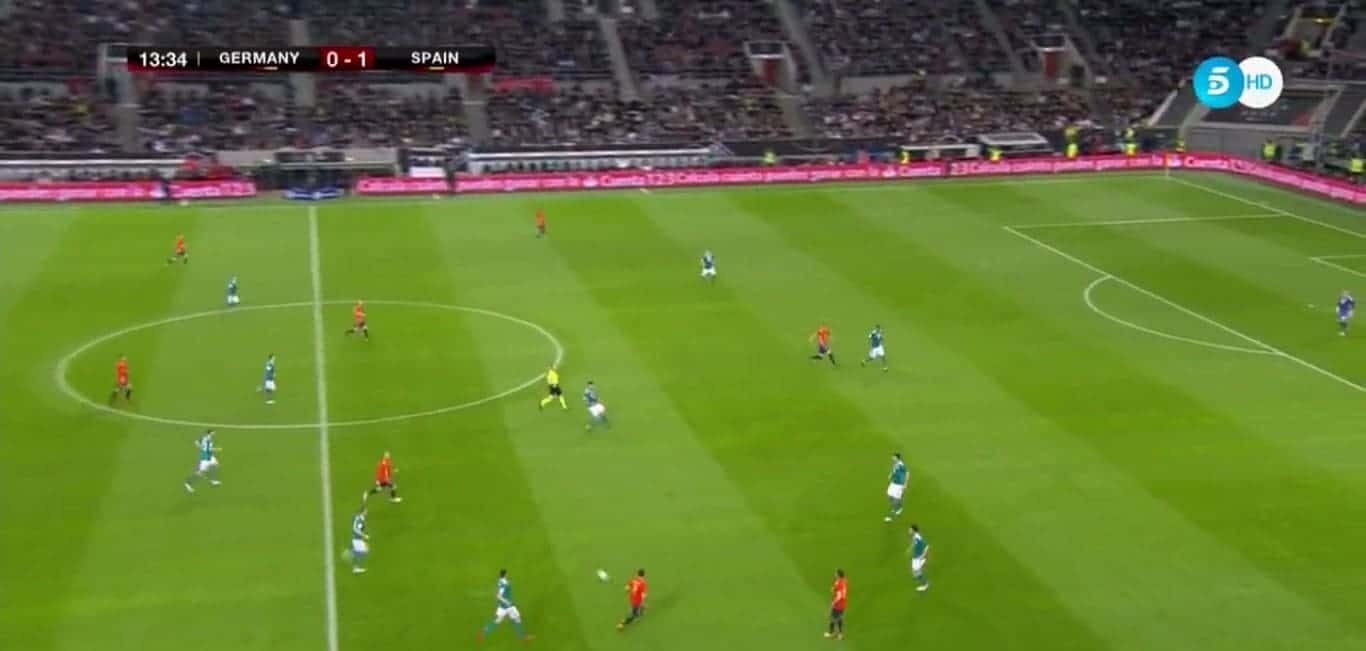

There is also the new full-back pairing. Germany at least have a proper left-back in Koln’s Jonas Hector this time around, having played centre-back Benedikt Howedes there four years ago, and Joshua Kimmich is highly thought of at right back, yet both remain unproven at this level. They may well meet what is asked of them, but we can’t currently be certain.
Key man
Manuel Neuer
The Bayern Munich goalkeeper was the key to Germany’s success in Brazil, especially in the last sixteen against Algeria. His brave positioning allowed Germany to maintain a high line and stay camped in the opponents half, with Neuer on hand to sprint out and sweep up any balls played in behind. His comfort with the ball at his feet was also important to Germany’s possession game.
This time around he may be key for different reasons. There are few doubts about him when he’s at his best, but, having missed nearly all of the past season with a foot injury, it’s simply a matter of whether he will be match sharp. Marc-Andre ter Stegen is a more than capable deputy but having just got back to fitness in time for the tournament, Neuer will take his place in goal.
With some question marks over the defence, Neuer may have his work cut out for him, so Germany fans will be hoping the friendlies against Austria and Saudi Arabia are enough to get him up to speed.
Young player to watch
Timo Werner
With the retirement of World Cup record goalscorer Miroslav Klose after the victory in Brazil, there appeared to be a bit of a gaping hole in the German frontline. Mario Gomez was still kicking around, but Low wanted more than a simple poacher to lead the line. He experimented with Mario Gotze as a false nine, but the scorer of the goal that won Germany the trophy against Argentina didn’t even make the squad.
Werner’s emergence couldn’t have come at a better time then really. The young striker has become deadly since his move to RB Leipzig from boyhood club Stuttgart. A constant buzz of energy, he uses his pace to constantly put the opposition backline under pressure. That can be when defending – Leipzig’s high octane style of pressing meaning Low doesn’t have to change much for Werner to fit in defensively, with the young forward constantly making defenders panic on the ball – however it’s most eye-catching when attacking.
His pace is enough to scare anyone and his ability to time his runs is growing by the game, but it’s his willingness to make those runs over and over again that makes him so useful for Germany, opening up the space behind him for Ozil, Draxler and Muller to work in and ensuring they always have someone to aim their passes at. Starting as a winger at Stuttgart, he’s also comfortable pulling out towards the left for Germany, making room for Muller to attack in the middle.
His hold-up play isn’t great and, although improving all the time, he’s not a particularly special finisher, but making so many runs and at such speed, the odds are always in his favour.
Wildcard
Leon Goretzka
The main question of the starting line-up has been about who partners Kroos in midfield. The Real Madrid playmaker undoubtedly has to start, but has certain weaknesses that make Khedira the favourite to start alongside him. Gundogan is the more talented but he’s also quite similar to Kroos – although a box-to-box player, his main strength is in his passing and he isn’t the strongest defensively. Him and Ozil controversially posing for photos with Turkish president Recep Erdogan also means there won’t be too much clamour for him to start over Khedira.
There is a third option though. New Bayern Munich signing Leon Goretzka has been impressing as a box-to-box midfielder at Schalke. Like Gundogan, he possesses an eye for a defence-splitting pass, but he also picks his chances to burst forward from midfield and attack the box. His lanky frame means he can sometimes get the ball stuck in his feet but he offers more in attack than Khedira and more variety to the midfield than Gundogan. Playing his natural game would often leave Kroos alone in front of the defence, so Khedira is the more likely to start but Goretzka is likely to at least get some minutes during the campaign.






Comments